Grounding and earthing are two similar cases. However, there are some items to describe the difference between grounding and earthing. The principal difference between grounding and earthing is that in earthing, the circuit with zero-volt potential characteristics is connected to the ground physically. However, in a grounding connection, although not physically connected to the ground, its potential is still zero.
Another basic difference between grounding and earthing is that in earthing the parts which don’t carry the current are connected to the ground. While in grounding, the part which conducts the current is connected to the ground.
In the following parts, first, the definitions and specifications of earthing and grounding will be introduced. Then, every difference between grounding and earthing will be enumerated.
Earthing Definition
The brief definition of earthing is the connection of non-current-carrying components of the devices to the earth. It is the method of preserving against the unjust bouts and spikes of electricity that may induce harm to the instruments besides lives. Consequently, the idea of electric potential should be identified.
During the event of any defect in the system, the electrical potential of the non-current carrying elements of the equipment increases. In these cases, someone may be shocked if they touch the body of the equipment. Earthing drains the leakage current to the ground. In this way, we would be protected against electric shock.
It also shields our dwelling devices from lightning and its consequences. To obtain the proper earthing, we have to connect the installation pieces to the earth using the ground conductor or an electrode. This object is placed in the soil at a short distance from the ground.
An earthing is a set of protective actions for metal objects that do not refer to the circuit and do not have direct contact with them, although, in the case of any flaw, voltage is generated.
Earthing connection reduces this voltage. Its effective role is to prevent the appearance of conditions that are dangerous for electrical devices and can save the lives of people who work with them.
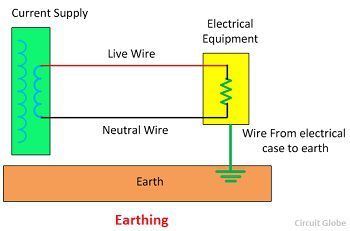
Earthing Features
The types of earthing wires according to their material can be strips, tubes, rods, reinforcement in concrete, or some other underground structures.
Another way to classify these wires can be by considering the way the conductor is placed in the earth; either horizontally, vertically, or angularly.
Depending on the environment in which the rods are installed, there are two types in the ground, and in the object foundation.
Regarding the earthing material, it can be added that it is generally made of galvanized cast iron, copper, or iron coated with copper.
Grounding Definition
Grounding is comparable to earthing to insulate electrical devices against current-related accidents. The main wire is joined to the power supply source to connect the device, and the other part of that is routed underground. In this system, the part that carries the current is connected directly to the ground.
The grounding gives the return route for the leakage current and consequently, it guards the devices of the power system against collapse. If a flaw happens in the system, the current in all three distinct phases gets unbalanced. The grounding supplies high levels of safety to the devices and enhances the reliability of the electrical system.
In other words, grounding covers methods for guarding some portion of the circuit, which provides the wanted function or the operation characteristics of the circuit.
Grounding can be accomplished in direct or indirect ways. The method in which a direct connection of the grounding system is performed is direct grounding. Indirect grounding is carried out via impedance by connecting to the set.
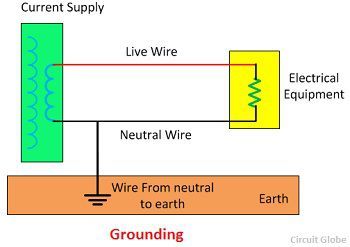
Grounding Features
The grounding for the cases of lightning provides the installation for protection to eliminate currents while atmospheric discharge occurs. It must restrict the voltage on the rod that the lightning reaches. It leads to avoiding repeated undesired waves in the electrical circuits.
Grounding and earthing processes are conducted likewise. All parts of the two can be connected with an iron-galvanized band. The grounding installation for protection against lightning includes the air terminals, down conductors, and Ground electrodes.
Often, the air terminals contain strips of galvanized iron. The strip is located in a way that it can create an electrical network, with the most covered regions of the object. Additionally, when there are metal components in a relevant area, provided that they have adequate sizes, they are utilized as air terminals. Since their electrical conductivity and thermal characteristics are suitable.
Down conductors strips are usually of galvanized steel, and when the appointed conditions are satisfied, they can be substituted by metal elements placed on the building. With the aid of those, the discharge of the current through the grounding system is taken place toward the ground. The grounding system contains electrically conductive components that are in direct contact with the ground.
All circuits including AC and DC require zero volts potential as a reference. It is the ground. The ground may or may not be earthed. In the power distribution system, the action of being earthed happens at the distribution or the destination points.
However, the vehicles, it is not earthed, and the electrical circuits of them, using the tires, have ground joined to the body insulated from the earth.
Neutral necessarily must not be in ground potential. This is because the wiring voltage may drop and there may be a neutral voltage to the ground.
As method of grounding, in the last years, the foundation grounding method has had a wide application. In this method, an electrical galvanized strip is attached to the reinforcement in the building foundation.
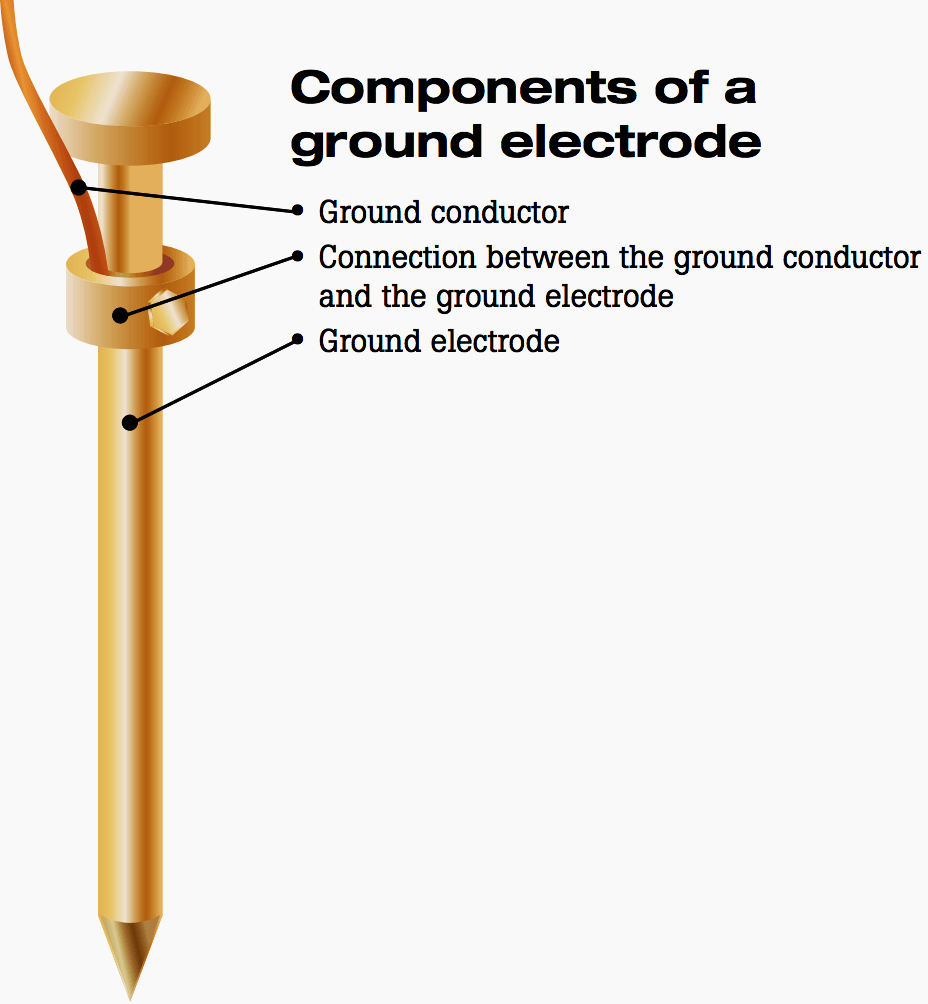
Difference between grounding and earthing
There are several aspects that can be used to explain the difference between grounding and earthing. In this section, we will express these cases.
Difference between grounding and earthing in Definition
Earthing is defined so that a point of the plant relating to the circuit connects to the earth. Consequently, the circuit is connected to the ground galvanically.
On the contrary, Grounding is described in a way that the earth is joined to a point of the plant that does not belong to the circuit. So it does not connect galvanically to the circuit. However, in case of a breakdown in insulation, this connection is not avoidable.
Protection against lightning assists to manage the currents of lightning, generated by atmospheric damping. This protection can be handled by joining the lightning installation to the rods. The installation is either detached or connected to the protective system, i.e. grounding or earthing.
Difference between grounding and earthing in Application
Another difference between grounding and earthing refers to the purposes of their installation. The use of an earthing system is to ensure the safety of the Users of electrical devices. But the main aim of the grounding system is to protect the power system. In other words, the role of earthing is to protect people and electrical equipment against shock, while grounding balances and unbalances the loads.
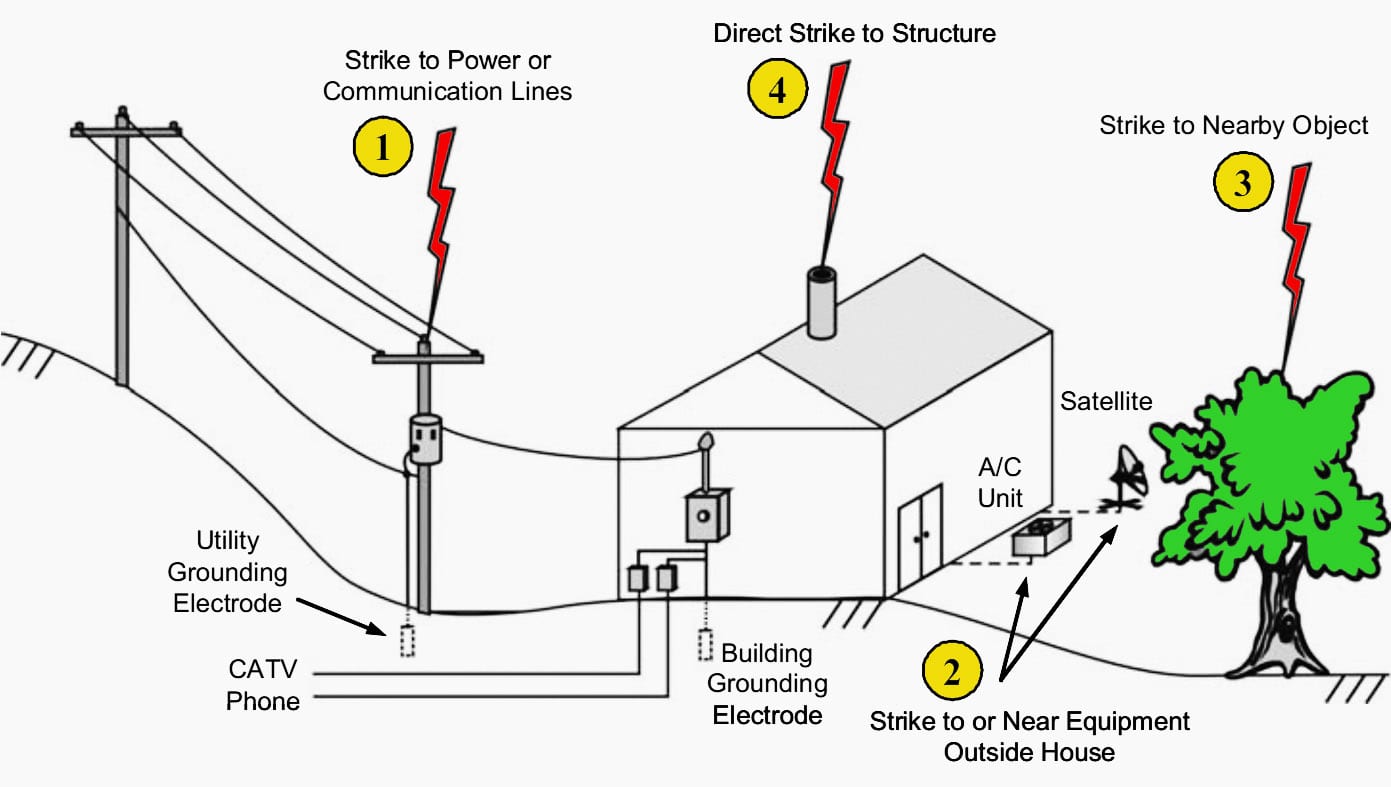
In the figure below, you can see the destructive effect of not having an earthing system for a building with electrical equipment that a person works with.
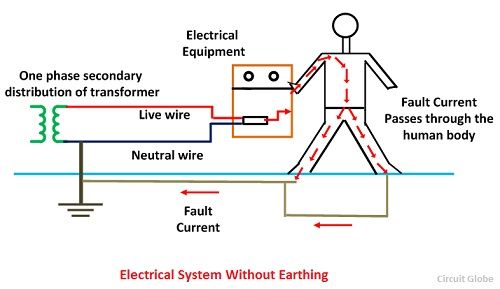
Deference between Earthing and Grounding in Operational Method
The grounding leads the undesired current to a path in order to protect the electrical devices from harm. But the earthing reduces the great potential of electrical appliances made by a fault. Hence it can preserve the human from electrical shock.
In short, the earthing system is preventive, but the grounding is a return route.
Difference between grounding and earthing in Connection Type
Another difference between grounding and earthing is the components connected to the ground. In the earthing system, the non-current-carrying elements such as the enclosure are connected to the earth. Therefore, earthing refers to the connection of dead parts of the system such as enclosures, supports, and frames to the earth.
On the other hand, the parts which carry the current are connected to the ground directly in the grounding system. Thus, grounding refers to the connection of live parts of the system, such as the neutral of the generator to the ground.
In grounding the system is not bodily joined to the ground. Moreover, the current potential on the ground is not zero. But in the system of earthing, there is a physical connection to the ground. Therefore, its potential is zero.
Both earthing and grounding refer to the zero potential, but the point is that the connected system to the zero potential is different from the Equipment connected to the zero potential. It is a grounding system when a neutral point of the device is connected to zero potential. However, when the enclosure of the device is connected to zero potential, it is called earthing.
Difference between grounding and earthing in Wire Color
For grounding, the color of the used wire is black. While in earthing the wire is in green color.
Difference between grounding and earthing in Wire Installation
The wire of the grounding is located between the earth and the neutral of the device. Whilst in the earthing the electrode is set between the body of equipment and the earth hole below the ground.
For example, in grounding, the neutral of a generator is connected to the ground. But in earthing, the body of a generator or a motor is connected to the earth.
Difference between grounding and earthing in Classification
There are three types of grounding:
- Resistance grounding
- Solid grounding
- Reactance grounding
Earthing is classified into three types:
- Pipe earthing
- Rod earthing
- Plate earthing
- Strip earthing
- Earthing through the tap
Difference between grounding and earthing in Circuit Symbols
In the following figures, you can see the symbols representing the earthing and the grounding.


Difference between grounding and earthing in Operation Continuity
The lightning protection system is installed for the impulse conditions of lightning. This is why it is called impulse grounding. As a result, the earthing works continuously through the operation of the system, whereas the protection system against lightning consequences is active only in terms of overvoltage. Therefore, the grounding system performs its functions during insulation failure.
Difference between grounding and earthing in Terminology
Due to the inherent similarities between the two structures, in many places, the conceptual differences between the two are ignored and only the system name is given to them based on terminology. For example, in the United States, grounding, and in the United Kingdom, earthing is used.
In This link, you can watch a video about the comparison of earthing and grounding.
Buy Equipment or Ask for a Service
By using Linquip RFQ Service, you can expect to receive quotations from various suppliers across multiple industries and regions.
Click Here to Request a Quotation From Suppliers and Service Providers
Read More on Linquip
- Difference between Orbit and Orbital
- HVDC vs HVAC Transmission Systems- Difference between them
- Difference between Density and Relative Density
- How to Calculate the Efficiency of Heat Exchangers?
- Difference between General Relativity and Special Relativity
- Earthing System: A Simple Explanation of Grounding System
- TT Earthing System: An Easy-to-Understand Guide Along with a Full Description


